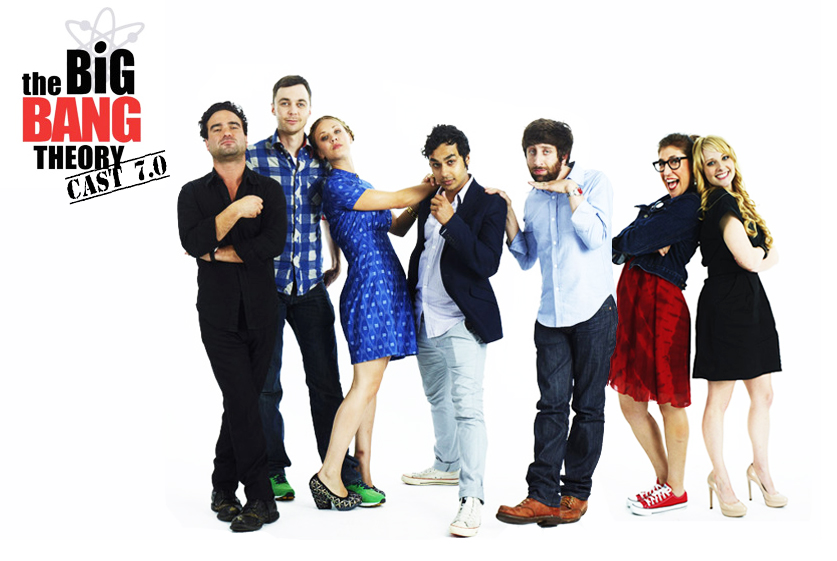Huh? Way to take the fun out of the best sit-com in ages. Still, it's cool to see a linguistic philosophical examination of a popular culture artifact.
Full Citation:
HU Shuqin. (2013). A Relevance Theoretic Analysis of Verbal Humor in The Big Bang Theory. Studies in Literature and Language, 7 (1), 10-14. DOI: http://dx.doi.org/10.3968/j.sll.1923156320130701.2549
Shuqin HU
Abstract
Relevance theory proposes a hypothesis of relevance in human communication. Human communication is an ostensive-inferential process, in which the hearer tries to seek the intended relevance by selecting different context assumptions. It is applicable to humor study. This paper takes the sitcom The Big Bang Theory as a case study. By analyzing some verbal humor examples within this framework, it proves that humor comes from the contrast between maximal relevance and optimal relevance.
INTRODUCTION
As a special kind of human communication, humor is always welcomed by people. No one can resist its power, because it can bring happiness and pleasant feeling to a person in depression; it can sooth a sad heart and give people a comfortable feeling. In a sense, humor is a way to a happy and colorful life. Since it plays an indispensable role in human communication, humor has been studied from different disciplinary viewpoints including philosophy, psychology, sociology, literature, rhetoric, linguistics and so on. With the development of humor study, the linguistic perspective is becoming the mainstream of thoughts because it is more applicable and more systematic. In this paper, a pragmatic theory, relevance theory will be employed in studying the creation and appreciation of humor. The theory is developed on the basis of communication and cognition. Although Relevance theory is not specially designed to study humor, it has been proved a very efficient framework to study humor, a special kind of communication.
American situation comedy is gaining on popularity in China, especially among young people. The recent hit series The Big Bang Theory will be taken as data source in this humor study.
The study of the verbal humor in sitcoms has both theoretical and practical values. Theoretically, it will enrich humor study, an important aspect of linguistic study. Practically, it will help Chinese people appreciate this form of TV artistic work better and hence enhance cross-cultural communication. At the same time, this kind of study also helps with English teaching in China. This paper will analyze the verbal humor in one of the recently popular sitcom The Big Bang Theory cognitively within the framework of the relevance theory. In the following, a general research history of humor and an introduction of The Big Bang Theory will be given respectively.
Research on Humor
The study of humor can trace back to the time of Aristotle and Freud. A commonly accepted classification divides traditional theories of humor into three groups: the Superiority Theory, the Release Theory, and the Incongruity Theory.
The Superiority Theory is mainly advocated by Aristotle and Hobbes. It holds that humor is an expression of superiority. We laugh at other’s misfortune or shortcoming, which reflect our sense of superiority. It’s characterized by one’s cognitive comparison of self against others on the basis of intelligence, beauty, strength, wealth and in a subsequent personally-experienced elation, triumph or victory as a result of such self-others comparisons.
The Release Theory examines humor from psychological perspectives. It points out that laughter is a means which can be used to release or reduce the strain coming from controlled thought or rationality. Freud is the chief exponent for the release theory.
The Incongruity Theory studies humor cognitively for the first time. In this theory, humor involves some kind of difference between what one expects and what one receives. It’s based on the mismatch between two ideas in the broadest possible sense.
As the linguistic research on humor in modern times develops, Semantic-oriented studies on humor prevail in the early year of humor research, among which the Semantic Script Theory of Humor (SSTH), and the General Theory of Verbal Humor (GTVH) are the most influential. However, many recent studies have given attention to the social factors, especially in pragmatic-oriented studies of humor. Pragmatics, with its programmatic lack of boundaries, is becoming the natural place to locate the linguistic side of the interdisciplinary study of humor.
A Short Introduction of The Big Bang Theory
Situation comedy or sitcom is a television program lasting nearly half an hour long with a regular cast and in a regular location such as household or workplace. Humor, especially verbal humor plays a crucial part in creating the entertaining effect of the comedy.
The Big Bang Theory is an American situation comedy created and produced by Warner Bros. Television and Chuck Lorre Productions. It won the best comedy series TCA award in August 2009, and is honored as “the best situation comedy after Friends.
The two main characters in the show are two roommates who work at the California Institute of Technology, one is experimental physicist Leonard Hofstadter and the other is theoretical physicist Sheldon Cooper. They are brilliant physicists with higher than average IQ, but quite awkward in social skills. They have two equally geeky friends and co-workers, Howard Wolowitz, an aerospace engineer, and Rajesh Koothrappali, a particle astrophysicist. Across the hall lives Penny, an attractive blonde waitress and aspiring actress, who later becomes Leonard’s girl friend; the geekiness and intellect of the four guys is contrasted with Penny’s social skills and common sense for comic effect.
References
- Attardo, S. (2001). Humorous text: A semantic and pragmatic analysis. Berlin/New York: Mouton de Gruyter.
- Freud, S. (1976). Jokes and their relation to the unconscious. London: Penguin Books.
- Liao, D. H. (2010). Relevance theory and the interpretation of English humor. Journal of Chongqing College Education.
- Sperber, D., & Wilson, D. (1986/1995). Relevance: Communication and cognition. Oxford Blackwell.
- Thomas, J. (1995). Meaning in interaction: An introduction to pragmatics. London: Longman Group limited.
- Xiong, X. L. (2004). Cognitive pragmatics. Shanghai: Shanghai Foreign Language Education Press.
- Xiong, X. L. (2004). Cognitive pragmatics. Shanghai: Shanghai Foreign Language Education Press.
- Yus, F. (2003). Humor and the search for relevance. Journal of Pragmatics.







